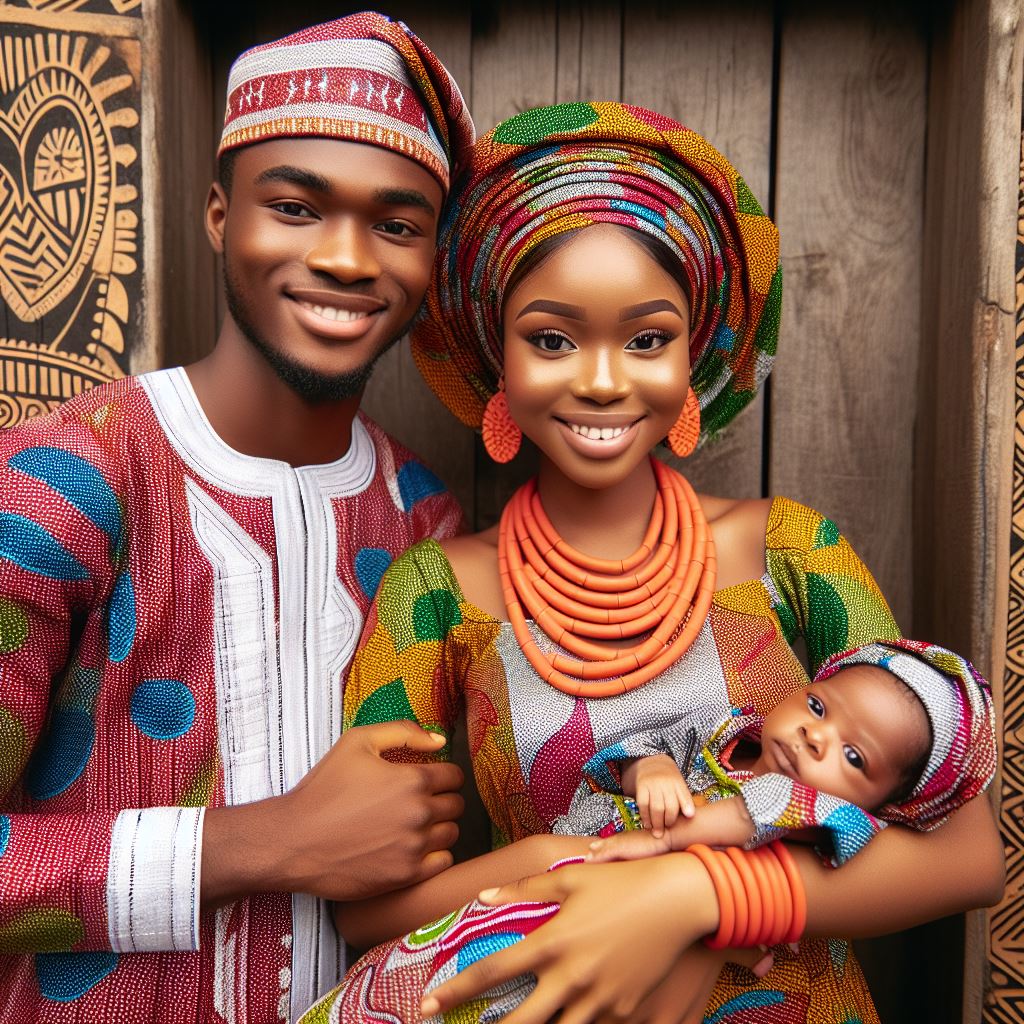Introduction
Dressing a preemie baby can be a daunting task due to their small size and delicate nature.
Preemies often have special needs when it comes to clothing, and it’s crucial for parents to understand how to dress them properly.
Proper clothing is essential for preemies as it can help regulate their body temperature, provide comfort, and support their growth and development.
Premature babies have sensitive skin that requires extra care, and the right clothing can prevent irritation and discomfort.
When dressing a preemie, it’s important to choose clothes that are soft, hypoallergenic, and free from harsh chemicals or dyes.
Avoid clothing with too many buttons or snaps, as they can be hard to manage and may irritate their delicate skin.
Opt for clothes with loose-fitting sleeves and stretchy materials that allow for easy movement.
Preemie-sized clothing or items made specifically for premature babies are recommended, as they provide a better fit.
It’s also crucial to consider the weather and the preemie’s health condition when selecting clothing.
Layering is a great option for regulating body temperature and ensuring they stay warm without overheating.
In fact, dressing a preemie baby requires special attention and consideration.
By choosing appropriate clothing that is comfortable and safe, parents can provide the best care for their little ones. Following these essential clothing tips will help ensure the well-being and development of preemie babies.
Choosing the Right Size
When it comes to dressing your preemie baby, selecting the right size is crucial for their comfort and well-being.
Preemie clothes are specially designed to cater to the unique needs of premature infants, but understanding the sizing options and ensuring a proper fit is key.
The different sizing options available for preemie clothes
Preemie clothing often comes in various sizing options, typically based on the baby’s weight.
Parenting Made Just for You
Get personalized Parenting Solutions tailored to your child’s needs. Transform your parenting journey with expert guidance in 1-3 days.
Get StartedManufacturers may categorize sizes as Small (3-5 pounds), Medium (5-7 pounds), or Large (7-10 pounds).
Some brands also use the gestational age, such as 32 weeks or 36 weeks, to guide parents in choosing the appropriate size.
It’s essential to refer to the size chart provided by the clothing brand to make an informed decision.
Tips for accurately measuring your preemie baby
Measuring a preemie baby can be challenging due to their delicate size.
To ensure accuracy, use a soft tape measure and lay your baby on a flat, non-slip surface.
Gently extend their legs and measure from the top of the head to the heel for length.
For the chest circumference, measure around the widest part of the chest.
Always measure when your baby is calm and not crying to obtain the most accurate readings.
Importance of ensuring a proper fit for preemie clothing
A proper fit is crucial for preemie clothing as it contributes to the overall well-being of your baby.
Ill-fitting clothes can cause discomfort, hinder movement, or even lead to overheating.
Look for clothes with soft seams and wide openings to make dressing and undressing easier.
Avoid clothes with too many snaps or buttons, as they can be cumbersome and may irritate your baby’s delicate skin.
Remember that premature infants vary in size and development, so don’t be discouraged if your baby doesn’t fit into standard preemie sizes.
Some brands offer clothes specifically designed for extremely small or very preterm babies.
Unveil the Perfect Name that Tells Your Family's Story
Let us help you find a name that embodies your family's values, traditions, and dreams. Our personalized consultation weaves cultural insights to create a name that's uniquely yours.
Get StartedPrioritize your baby’s comfort and consult with your healthcare provider for personalized recommendations on clothing for your preemie.
Read: Preemie Clothing: Choosing the Right Fit
Specialized Preemie Clothing
Premature babies, or preemies, require delicate care and attention, especially when it comes to dressing them.
Standard baby clothing may not be suitable for their unique needs.
Specialized preemie clothing offers a thoughtful solution, providing comfort and functionality tailored to their size and health requirements.
Benefits of Specialized Preemie Clothing
- NICU-Friendly Designs: Many preemies spend their initial days or weeks in the Neonatal Intensive Care Unit (NICU). Specialized preemie clothing is designed with features that make it compatible with the NICU environment. These designs consider medical equipment, allowing easy access for monitoring and necessary interventions.
- Gentle Fabrics: Premature infants often have sensitive skin, making it crucial to choose clothing made from soft, hypoallergenic fabrics. Specialized preemie clothing takes this into account, minimizing the risk of irritation and discomfort.
- Proper Fit: Standard baby clothes may be too large for preemies, leading to potential complications. Specialized clothing comes in sizes specifically tailored to premature babies, ensuring a snug fit that promotes warmth and facilitates proper development.
Features to Look for in Specialized Preemie Clothing
- Easy Access for Medical Needs: Look for clothing with strategically placed openings or snaps to allow medical professionals easy access to the baby’s body without having to remove the entire garment. This facilitates necessary interventions and reduces disturbance for the baby.
- Temperature Regulation: Premature babies struggle with regulating their body temperature. Opt for clothing that helps maintain a stable temperature, whether through breathable fabrics or layers that can be easily adjusted.
- Seamless Construction: Avoid clothing with rough seams that could cause discomfort or skin abrasions. Seamless designs minimize irritation and provide a smooth surface against the baby’s delicate skin.
Tips for Finding Reliable Sources for Specialized Preemie Clothing
- Consult Healthcare Providers: Seek recommendations from your baby’s healthcare team. They can guide you on reputable brands or stores that specialize in preemie clothing.
- Online Communities: Join online communities or forums dedicated to parents of preemies. Fellow parents can share their experiences and suggest trustworthy sources for specialized clothing.
- Specialized Retailers: Look for stores specifically catering to premature infants. These retailers often understand the unique needs of preemies and offer a variety of specialized clothing options.
Investing in specialized preemie clothing ensures that your little one receives the care and comfort they deserve during their early, critical days.
By considering NICU-friendly designs, key features, and reliable sources, you can make informed choices that contribute to your preemie’s well-being.
Read: Bonding with Your Preemie: Loving Strategies
Fabric Selection and Comfort
When it comes to dressing your preemie baby, fabric selection is paramount to ensure their delicate skin remains nurtured and protected.
The importance of soft and gentle fabrics cannot be overstated, as preemies often have sensitive skin that requires extra care.
Softness and Gentleness
Opting for fabrics that are exceptionally soft and gentle is crucial for preemie clothing.
Fabrics like organic cotton are ideal, providing a tender touch against the baby’s skin.
Look for clothing items specifically designed for premature infants, as these are crafted with their unique needs in mind.
Suitable Fabric Options for Preemie Clothes
Organic cotton stands out as a superior choice for preemie clothes due to its natural and chemical-free composition.
This fabric is breathable, reducing the risk of overheating, and its soft texture minimizes irritation.
Additionally, it is less likely to contain harmful substances that could trigger allergies or discomfort.
Another excellent option is bamboo fabric, known for its hypoallergenic and moisture-wicking properties.
Bamboo is not only eco-friendly but also provides a silky smooth feel against the baby’s delicate skin.
When selecting preemie clothing, prioritize those made from these breathable and comfortable fabrics.
Tips for Evaluating Fabric Quality
When evaluating fabric quality, consider the following tips to ensure your preemie’s comfort:
- Check for Seams: Inspect the clothing for flat and smooth seams to prevent rubbing or chafing on the baby’s sensitive skin.
- Avoid Harsh Materials: Steer clear of fabrics with rough textures or synthetic materials that may cause irritation. Stick to natural fibers for optimal comfort.
- Look for Labels: Read clothing labels to identify the fabric composition. Choose items labeled as organic cotton or bamboo for a softer and safer option.
- Prioritize Breathability: Opt for fabrics that allow air circulation to regulate the baby’s body temperature, preventing overheating.
By prioritizing soft and gentle fabrics, such as organic cotton and bamboo, and being mindful of quality indicators, you can create a wardrobe that not only embraces your preemie in comfort but also contributes to their overall well-being.
Choosing the right fabrics ensures that your little one’s first experiences with clothing are as gentle and cozy as possible.
Read: Preemie Sleep Patterns: Helpful Insights
Layering and Climate Control
As a parent of a preemie baby, ensuring their comfort and well-being is of utmost importance.
One key strategy to achieve this is through proper layering and climate control.
The delicate nature of preemie babies calls for special attention to temperature regulation, making layering a crucial aspect of their clothing routine.
Importance of Layering for Preemie Babies’ Comfort and Temperature Regulation
Understanding the significance of layering is the first step toward ensuring your preemie’s well-being.
Layering provides flexibility in managing their body temperature, allowing you to easily add or remove clothing as needed.
Preemie babies have limited fat stores, making it challenging for them to regulate their own body temperature.
Layering helps in creating a microclimate close to their skin, providing warmth without overheating.
Tips for Layering Without Overwhelming the Baby
When it comes to layering for preemie babies, less is often more.
Opt for soft, breathable fabrics like cotton to minimize irritation to their sensitive skin.
Start with a thin, snug onesie as a base layer, ensuring it covers their entire body.
Over this, add a long-sleeved shirt and pants.
For cooler environments, consider lightweight, cozy sweaters or jackets.
Be mindful of seams and tags, as these can cause discomfort.
Adjusting Clothing Based on Surrounding Temperature
Adapting to varying temperatures is crucial for preemie babies, especially if they spend time in different environments.
In warmer weather, opt for a single layer or a light, breathable blanket.
In colder climates, add more layers and choose hats to prevent heat loss from their heads.
Always check your baby’s neck and back to ensure they are not too warm or too cold.
Keep in mind that preemie babies may need an extra layer compared to full-term babies.
In essence, mastering the art of layering and climate control is a fundamental skill for parents of preemie babies.
By understanding their unique needs and following these tips, you can create a comfortable and safe environment for your precious little one.
Read: Essential Preemie Milestones to Monitor

Fastenings and Accessibility
Dressing a preemie baby can be a delicate task, especially when they have medical equipment such as IV lines.
It’s crucial to choose clothing that not only accommodates these necessities but also ensures easy accessibility for medical procedures and care routines.
Challenges of Dressing Preemie Babies with Medical Equipment
Preemie babies often require medical interventions, and IV lines are a common sight in the neonatal intensive care unit (NICU).
These delicate lines need to be carefully managed during dressing to prevent any disruptions to the baby’s care.
Traditional clothing with tight openings and intricate designs can pose challenges, leading to unnecessary stress for both the baby and the medical team.
Tips for Choosing Preemie Clothes with Convenient Fastenings and Easy Accessibility
- Snaps and Zippers: Opt for preemie clothes with snaps or zippers that run from the neckline to the foot. This design allows for easy access without disturbing medical equipment on the baby’s chest or abdomen.
- Front-Opening Styles: Look for front-opening styles that enable quick and gentle dressing. This way, you can avoid lifting the baby, minimizing the risk of dislodging IV lines or other medical devices.
- Soft Fabrics: Choose clothing made from soft, breathable fabrics to ensure the baby’s comfort. Smooth materials reduce friction against medical equipment and sensitive skin.
- Convertible Options: Consider convertible designs that can be opened or closed as needed. This flexibility is invaluable during medical procedures, allowing healthcare professionals easy access while keeping the baby appropriately covered.
Importance of Minimizing Disturbances During Medical Procedures and Care Routines
Disturbances during medical procedures can be distressing for preemie babies, affecting their overall well-being.
Choosing clothing with thoughtful fastenings not only eases the dressing process but also contributes to a more comfortable and less disruptive environment for necessary medical care.
Basically, when dressing your preemie baby, prioritize clothing with convenient fastenings and easy accessibility.
By doing so, you’re not only making daily care routines smoother but also contributing to the overall well-being of your little one during their critical early days.
Practicality and Convenience
As a parent or caregiver of a preemie baby, practicality and convenience become paramount when it comes to clothing choices.
Preemies often require frequent diaper changes and medical interventions, making it essential to opt for garments that make these tasks easier for both you and your tiny bundle of joy.
Easy-to-Use Clothing for Parents and Caregivers
When selecting preemie clothes, prioritize ease of use.
Look for items with wide openings and simple closures, such as snaps or zippers, to simplify the dressing process.
These features not only save time but also make it more comfortable for your baby, especially if they are hooked up to monitors or medical equipment.
Tips for Facilitating Diaper Changes and Medical Interventions
Preemie babies often need frequent diaper changes, and some may require medical interventions.
Choose clothes that allow quick access to the diaper area, minimizing disturbance to your baby.
One-piece outfits with snaps along the inseam or front can be a great choice, as they can be easily opened for efficient diaper changes without having to fully undress the baby.
For medical interventions, consider clothing with strategically placed openings.
This can reduce the need to remove the entire outfit, ensuring that your baby stays warm and comfortable during necessary medical procedures.
Minimal Embellishments to Avoid Discomfort
While adorable embellishments and decorative features on baby clothes may be tempting, it’s crucial to prioritize your preemie’s comfort and safety.
Opt for garments with minimal embellishments, as these can cause discomfort or complications, especially if they come into contact with delicate skin or interfere with medical equipment.
Choose soft, breathable fabrics to reduce the risk of irritation, and steer clear of clothing with rough seams or excessive tags.
Your preemie’s comfort should be at the forefront of your clothing choices, allowing them to thrive and grow without unnecessary discomfort.
In a nutshell, practicality and convenience should guide your choices when dressing your preemie.
By prioritizing easy-to-use clothing with accessibility features and minimal embellishments, you’re not only making your caregiving journey smoother but also ensuring that your little one feels snug and secure in their tiny garments.
Care and Hygiene
Welcoming a preemie into your family brings unique joys and responsibilities, especially when it comes to clothing care and hygiene.
These tiny bundles of joy require extra attention to ensure their delicate skin stays healthy and irritation-free.
Here are essential tips to keep your preemie baby’s clothing clean, comfortable, and safe.
Tips for Washing and Caring for Preemie Clothes
When it comes to washing preemie clothes, opt for a gentle and fragrance-free detergent.
Preemie skin is exceptionally sensitive, and harsh chemicals or strong scents can lead to irritation.
Choose a detergent specifically designed for sensitive skin or baby clothes, ensuring it is free from dyes and perfumes.
Wash all new clothes before dressing your preemie to remove any residues from the manufacturing process.
Use a mild fabric softener to keep clothes soft, but be cautious not to overdo it.
Fragrance-free softeners are preferable to minimize the risk of skin reactions.
Wash preemie clothes separately from the rest of the laundry to prevent cross-contamination with adult clothing.
Special Considerations for Avoiding Irritation and Maintaining Cleanliness
Preemie babies often spend time in the neonatal intensive care unit (NICU), where the environment is closely controlled.
Mimic these conditions at home by ensuring your baby’s clothing is clean and free from potential irritants.
Avoid clothing with rough seams, zippers, or irritating tags. Opt for soft, breathable fabrics like cotton, which is gentle on delicate skin.
Frequent diaper changes are crucial to preventing irritation and maintaining cleanliness.
Use a gentle baby wipe or a damp cloth with warm water to clean your preemie’s bottom, and pat it dry with a soft towel.
Ensure that diapers fit properly to avoid chafing and discomfort.
Importance of Regularly Checking Clothing for Wear and Tear
Preemie babies grow rapidly, and their clothes must accommodate their changing size.
Regularly check for signs of wear and tear, especially around seams and snaps.
Replace any clothing that has become too tight or shows signs of damage to prevent discomfort and skin irritation.
Ultimately, paying close attention to the care and hygiene of your preemie baby’s clothing is a crucial aspect of ensuring their well-being.
By choosing gentle detergents, avoiding potential irritants, and regularly inspecting clothes for wear, you contribute to creating a safe and comfortable environment for your precious little one.
Conclusion
In this post, we’ve explored crucial clothing tips tailored specifically for preemie babies, recognizing the unique needs and sensitivities they possess.
First and foremost, we emphasized the significance of selecting soft and breathable fabrics like organic cotton to ensure comfort and reduce the risk of skin irritation.
We delved into the importance of size-appropriate clothing, as preemies often require specialized garments to accommodate their smaller proportions and delicate skin.
Furthermore, we discussed the practicality of front-opening outfits, making dressing and diaper changes more efficient while minimizing disturbance to the baby.
Layering emerged as a key strategy, allowing parents to regulate their preemie’s body temperature more effectively in various environments.
Lastly, we touched upon the importance of choosing clothing with minimal seams and tags, reducing potential sources of discomfort for these delicate infants.
As parents navigate the intricate journey of caring for their preemie, providing the right clothing is a tangible way to support their child’s well-being.
By incorporating the tips discussed in this blog, parents can create a nurturing environment that promotes comfort and safeguards their baby’s sensitive skin.
The use of soft fabrics, appropriate sizing, and thoughtful design considerations will contribute to a positive experience for both parent and preemie.
For those seeking specialized preemie clothing, numerous resources are available to cater to the unique needs of these tiny miracles.
Local baby boutiques, online retailers specializing in preemie wear, and hospital gift shops often carry a range of options.
Additionally, connecting with support groups and online communities for parents of preemies can be a valuable source of recommendations and shared experiences.
Remember, every preemie is unique, and finding the right clothing may require a bit of trial and error, but with persistence and these helpful tips, parents can create a cozy and nurturing wardrobe for their precious preemie.




